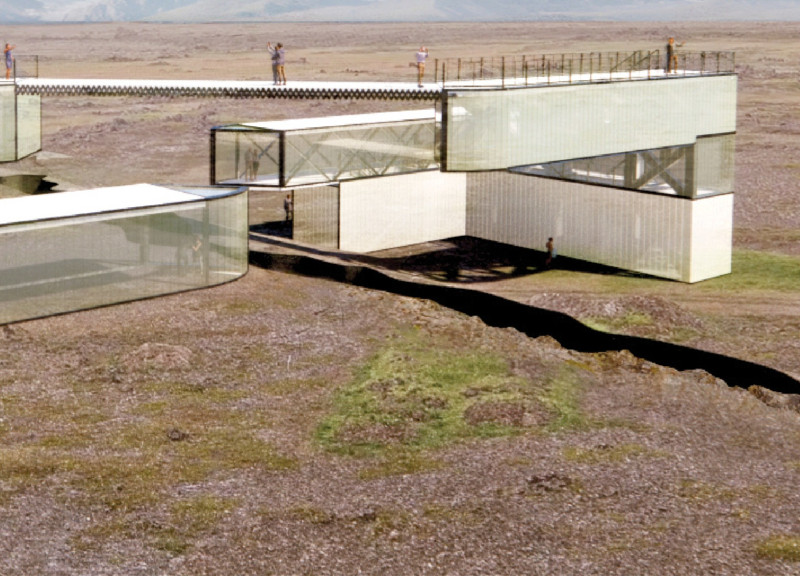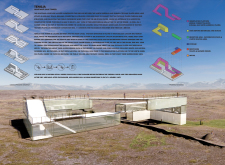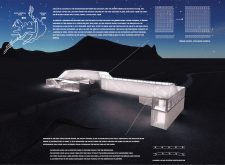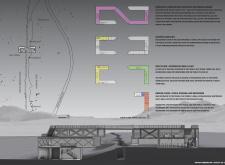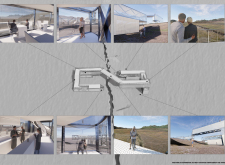5 key facts about this project
The TENGA Grjótagjá Cave Tower is an architectural project located near Lake Mývatn, Iceland, strategically positioned at the intersection of the North American and Eurasian tectonic plates. This structure serves dual purposes as an observation platform and a public facility, enhancing the visitor experience while fostering appreciation for the region’s geological significance. The project reflects the integration of human interaction with natural forces, facilitating educational and recreational opportunities in a landscape defined by tectonic activity.
Unique Design Approaches
The design of the TENGA Cave Tower emphasizes a connection between the architecture and the surrounding geological dynamics. The project's configuration mimics the movement associated with tectonic shifts, employing an expandable bridge that connects various functional areas. This adaptive design not only accommodates geological movements but also provides a dynamic experience for users as they navigate through the structure.
The use of channel, frosted, and seamless glass materials enhances the transparency and integration of the structure within its natural environment. Channel glass offers privacy while allowing light penetration, creating an inviting atmosphere. Frosted glass, used strategically on the ground floor, supports functionality without compromising aesthetics. Each glass element fosters a sense of openness, allowing visitors to engage with the landscape.
A significant aspect of this project is the incorporation of Icelandic cultural bathing traditions. Facilities for showering and bathing are integrated into the structure, promoting interaction with local customs. This element provides visitors with an immersive experience, blending education and cultural engagement seamlessly into the design.
Functional Layout and Important Features
The TENGA Cave Tower's layout comprises several distinct functional areas. The ground floor serves essential needs, including restrooms and storage. Public spaces offering information about geological features surround these facilities. The first floor features an information desk and a café, enhancing the visitor experience. The second floor includes dining areas with views, creating a communal space for visitors to enjoy while taking in the surrounding landscape.
Upper observation platforms maximize viewing potential, enabling visitors to observe significant geological formations while contemplating the dynamic forces at play. The bridge, a crucial feature of the design, not only provides physical access but symbolizes the connection between tectonic identities. This thoughtful architecture enhances the user experience by inviting exploration and discourse about the geological context that characterizes the region.
The TENGA Grjótagjá Cave Tower represents a modern architectural endeavor that merges functionality with educational objectives. Its unique integration of local culture, attention to tectonic dynamics, and emphasis on transparency make it stand out among traditional tourist facilities. For further exploration of the architectural plans, sections, designs, and ideas, readers are encouraged to delve deeper into the project presentation for comprehensive insights.


